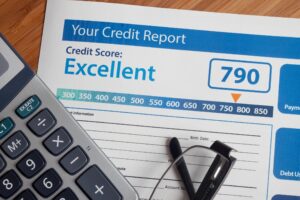Maximize Your Financial Health: The Benefits of Paying More Than the Minimum on Your Credit Cards
At O1ne Mortgage, we prioritize your financial well-being and aim to provide you with the best advice to manage your finances effectively. One crucial aspect of financial health is how you handle your credit card payments. While it might seem convenient to pay only the minimum amount due each month, this approach can lead to long-term financial challenges. In this blog, we will explore the benefits of paying more than the minimum on your credit cards and provide actionable strategies to help you achieve financial freedom.
You Save Money
Paying only the minimum amount on your credit card each month might make your budget more manageable in the short term, but it can lead to significant debt over time. The interest on the unpaid balance continues to accumulate, making it harder to pay off your debt. By paying more than the minimum, you can reduce the amount of interest you owe and pay off your debt sooner.
Keeping a balance on your credit card suggests that you may be spending more than you earn. Consider creating a budget and a debt repayment plan to ensure you have the cash to make payments above the minimum amount due each month. Regularly paying more than the minimum can help you save money in the long run.
You Pay Off Your Credit Card Balances Faster
When you only make the minimum payment, it can take a long time to pay off your balance completely. For example, if you have a $5,000 credit card balance with a 20% interest rate and only make the minimum monthly payments of 3% of the balance, it will take you over four years to pay off the debt. You will also pay a significant amount in interest charges.
However, if you increase your monthly payment to 6% of the balance, you could pay off the debt in less than two years, saving you a substantial amount in interest. By paying more than the minimum, you can significantly reduce your repayment term and the total amount paid.
You Reduce Your Credit Utilization Ratio
Paying more than the minimum on your credit cards will lower your credit utilization ratio, which is the percentage of available revolving credit you’re using. Your credit utilization ratio is a crucial factor in determining your credit score, accounting for approximately 30% of your overall score. Generally, the lower your credit utilization, the higher your credit score.
Financial experts recommend keeping your credit utilization rate below 30%, but the lower, the better. Maintaining a low credit utilization ratio can help you demonstrate creditworthiness to potential lenders and build a positive credit history.
Strategies for Paying More Than the Minimum Credit Card Payment
Consider these six payment strategies to accelerate your credit card debt payoff plan:
Find Your Statement Balance
Paying off credit card debt starts with understanding how much debt you’re dealing with. Check all your statements to get your statement balances, or what you owe at the end of a billing cycle. Aim to pay the statement balance in full each month to avoid paying credit card interest and make quicker progress toward paying off your card.
Stick to a Budget
Creating and sticking to a budget can help you identify areas to cut spending and allocate more money to tackle credit card debt. Start by noting your monthly income and all necessary expenses. Prioritize higher payment amounts toward your credit card debt over nonessential spending, like dining and entertainment.
Increase the Margin in Your Budget
To fast-track your plan to zero out credit card debt, look for ways to cut spending or increase your income. Save money by canceling subscriptions and memberships you no longer use or can live without. Consider cutting back on dining and entertainment and look for alternatives like eating with your family at the park or playing games with friends.
On the other side of the ledger, volunteer for overtime at work or ask your employer for a wage increase if you’re due one. Taking on a side hustle or a second job, even if it’s only temporary, can help you earn extra cash to pay over your minimum credit card payment.
Take the “Avalanche” Approach
Debt repayment strategies like the avalanche method can help you pay more than your minimum credit card payments. With the avalanche strategy, you prioritize paying down the credit cards with the highest annual percentage rate (APR). Allocate all your extra funds to the card with the highest interest rate while making minimum payments on the others. Once that card is paid off, repeat the process with the next highest APR card.
Build a “Snowball” Method
The debt snowball method is another debt repayment strategy that can help you gamify your debt reduction efforts. With this method, you’ll make minimum payments on all your cards except the one with the lowest balance. Once you pay off that card’s balance, prioritize paying off the card with the next-lowest balance and repeat the process until all your credit cards are paid off.
Switch to a Debit Card
When you use a debit card for spending, you’re pulling from the money in your bank account, not borrowing money on credit. This approach can help you avoid overspending and ensure you have enough money to pay more than the minimum on your credit card. Using a debit card can also help you stay on track with your budget.
Additional Options for Paying Off Credit Card Debt
If you’re struggling to pay off your credit card debt, consider these three options to help erase your credit balances:
Debt Consolidation Loan
With a debt consolidation loan, you take out a personal loan to pay off your existing credit card debt. This option can help you pay off high-interest credit cards with a lower-interest personal loan, allowing you to make only one monthly payment instead of several. The average credit card interest rate is currently 20.09%, while the average interest rate on a 24-month personal loan is 11.48%, according to the Federal Reserve.
Balance Transfer Credit Card
You also have the option to transfer your credit card balances to a balance transfer credit card with a 0% introductory APR. Aim to pay off your debt during the interest-free promotional period, which typically ranges from 12 to 21 months. Be sure to account for any balance transfer fees, usually around 3% of the amount transferred.
Debt Management Plan
Another option is to work with a nonprofit credit counseling agency that can review your finances and create a repayment plan they manage. The credit counselor negotiates with creditors on your behalf to create a new payment plan with lower interest rates, waived fees, and other conditions designed to help you pay off your debts within three to five years.
The Bottom Line
Paying more than the minimum on your credit card can be daunting, especially if your budget is tight. By sticking to a budget and adding some financial breathing room, you can add more funds to your payment. Start by paying as much as you can afford while still meeting your other financial obligations. Consider following a debt repayment strategy that may save you money or improve your likelihood of success.
If high credit card balances are dragging down your credit score, consider signing up for Experian Boost®, which can give you credit for bills you already pay like utilities, streaming services, and rent. Experian Boost also includes access to your Experian credit report and FICO® Score, the score used by 90% of top lenders.
For any mortgage service needs, call O1ne Mortgage at 213-732-3074. Our team is here to help you achieve your financial goals and secure a brighter financial future.







